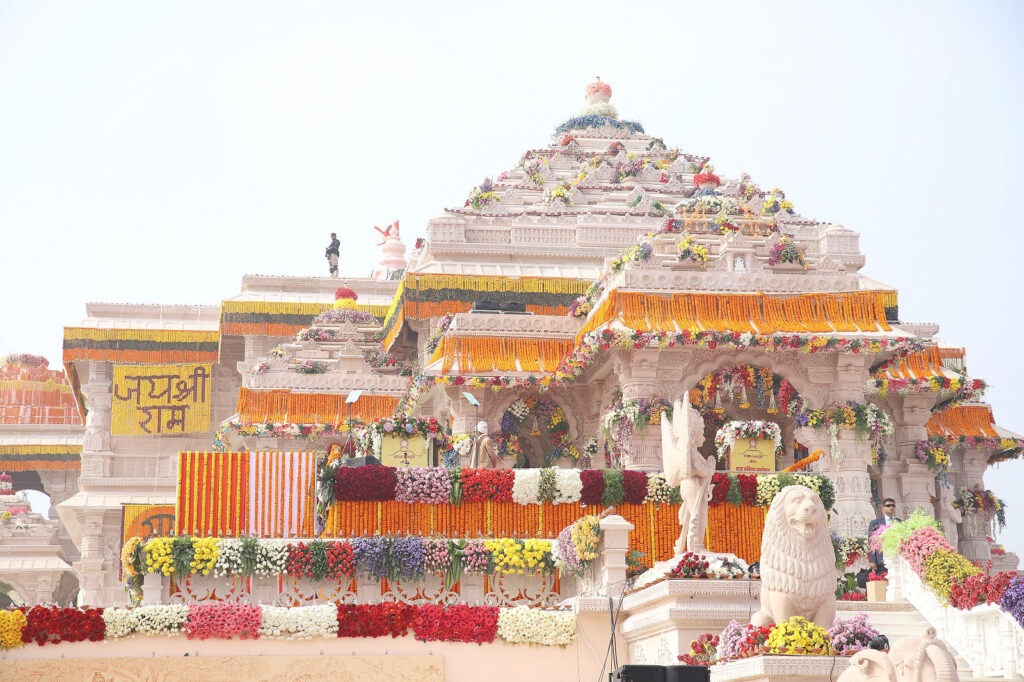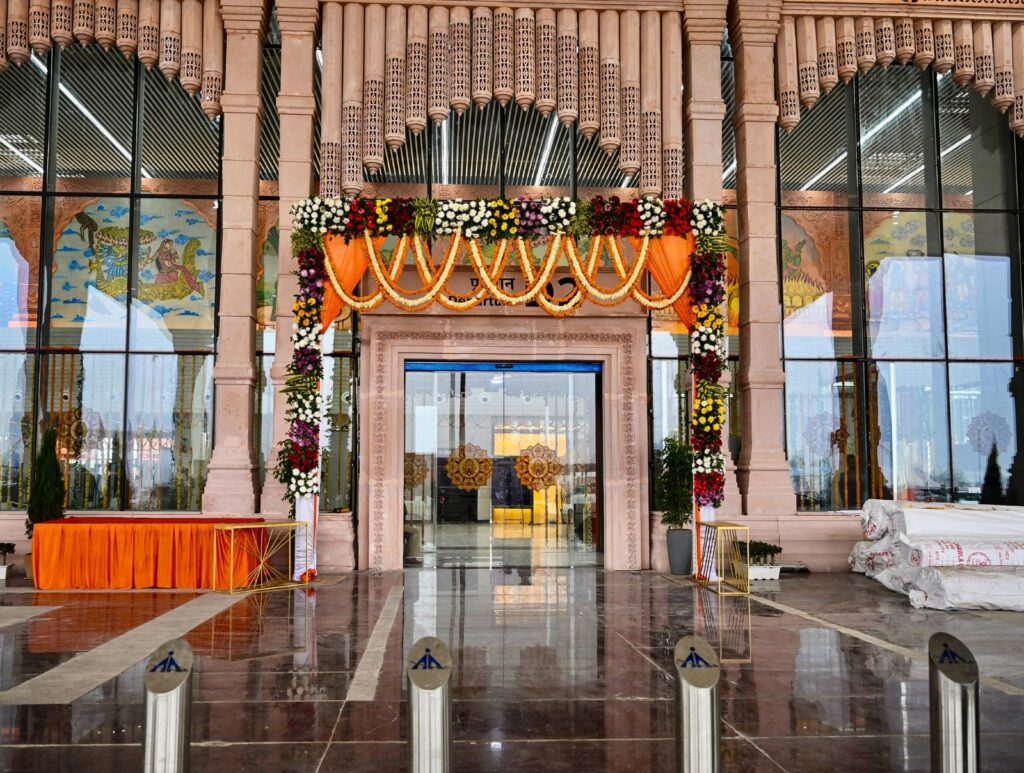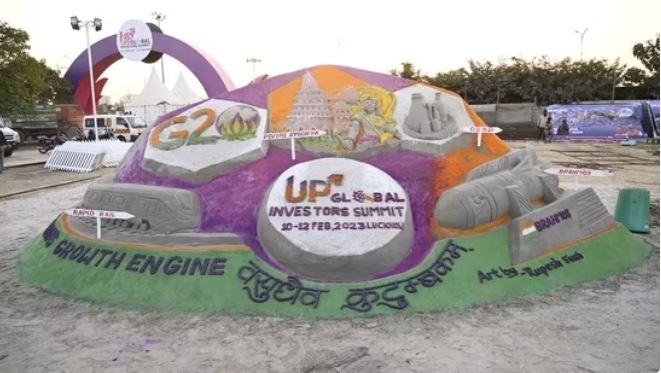The culmination of the consecration ceremony marks a pivotal moment for Ayodhya as the town undergoes a transformative journey propelled by the grand Ram temple. This historic event, held on 22nd January, is not just a religious landmark but is poised to reshape the fortunes of Ayodhya, ushering in a new era of economic prosperity.

As the temple town witnesses an influx of tourists, the ripple effects are palpable in the surge of real estate developments, job opportunities, and increased profits for local businesses. Let’s delve into the factors driving this change and explore the positive ripples it will create.
Infrastructure Overhaul
Ayodhya has strategically prepared for the surge in visitors post the consecration, evident in the foundation stone-laying of projects worth Rs 11,100 crore in December. Ayodhya’s transformation into a major pilgrimage destination is evident in its burgeoning air and rail connectivity.
Major airlines, including IndiGo and Air India Express, have launched multiple flights connecting Ayodhya with major cities. The town now boasts a new airport terminal covering 6,500 square meters and a revamped Ayodhya Dham railway station, each designed to accommodate the anticipated influx of tourists.

Indian Railways has also introduced 200 “Aastha Special Trains” to Ayodhya post the consecration, catering to devotees from various states. This multi-modal connectivity overhaul ensures that reaching Ayodhya is easier than ever, further solidifying its status as a spiritual epicenter for millions.
Additionally, the Uttar Pradesh government has initiated a Rs 2,180 crore greenfield town project spanning 1,200 acres to alleviate congestion. This comprehensive infrastructure growth includes upgraded highways, refurbished roads, and water and power projects.
Investment Influx
Ayodhya has become a hotspot for investment, attracting attention from real estate developers, hoteliers, airlines, and corporates. A Global Investors Summit witnessed the signing of 102 Memorandums of Understanding (MoUs) totaling around Rs 18,000 crore for tourism in Ayodhya.

The Ayodhya Master Plan 2031 outlines projects worth Rs 85,000 crore aimed at upgrading the town’s overall infrastructure.
Hospitality Boom
The surge in tourism has prompted a significant hospitality boom in Ayodhya. Currently boasting approximately 17 hotels with 590 rooms, the town is undergoing a radical transformation with over 50 big hotel construction projects underway. Leading names in the industry, including Taj, Oberoi, Trident, Marriott, Radisson, and Ginger, are investing in Ayodhya.
A seven-star vegetarian-only hotel, a first of its kind, is set to be built by The House Of Abhinandan Lodha. The real estate sector is also booming, with the Lodha group planning residential plots, villas, and high-rise luxury apartments.
Tourist Influx
In 2022, over 20 million pilgrims flocked to Ayodhya, a monumental 100-fold increase compared to pre-construction figures. The inauguration of the Ram temple is expected to give a significant boost to India’s spiritual tourism. With an estimated 7,000 guests during the inauguration ceremony and a projected three to five lakh visitors daily for at least a month, Ayodhya is set to attract 50 million to 10 million footfalls annually.

The majestic Ram Janmabhoomi, a stunning architectural marvel, has become a national landmark, drawing not just devotees but art enthusiasts and history buffs alike. Beyond the temple, Ayodhya’s cultural tapestry shimmers. The Saryu Ghats, bathed in the golden hues of dawn, resonate with the chants of pilgrims and the gentle lapping of the river. Museums like the Mandir Parikrama Museum unveil the city’s fascinating past, while bustling bazaars like Hanuman Garhi Chowk tempt with local handicrafts and aromatic spices.
Economic Impact
The economic impact of the Ram temple is substantial, generating job opportunities and business growth. Prior to the opening, the hospitality, travel, and tourism sectors created 20,000 jobs. Yeshab Giri, CCO at Randstad India, estimates the creation of 20,000 to 25,000 permanent and temporary jobs annually.
Thousands of jobs have been created in the hospitality, transport, construction, and retail sectors, empowering local communities and boosting living standards. Additionally, skilled artisans and craftsmen are seeing a renewed demand for their traditional handicrafts, preserving local heritage while generating income.
This economic boom is not limited to Ayodhya, as neighboring cities like Lucknow, Kanpur, and Gorakhpur are also expected to benefit. As the city embraces its dual identity as a spiritual sanctuary and a thriving tourist destination, its economic future shines bright, promising prosperity for generations to come.
Conclusion
The Ram temple in Ayodhya is proving to be a catalyst for unprecedented economic growth, transforming the town into a thriving hub for investors, tourists, and businesses alike. The carefully planned infrastructure developments, coupled with the hospitality and real estate boom, indicate that Ayodhya’s economic renaissance is not just a momentary surge but a sustained upward trajectory, promising a brighter future for the town and its residents.








